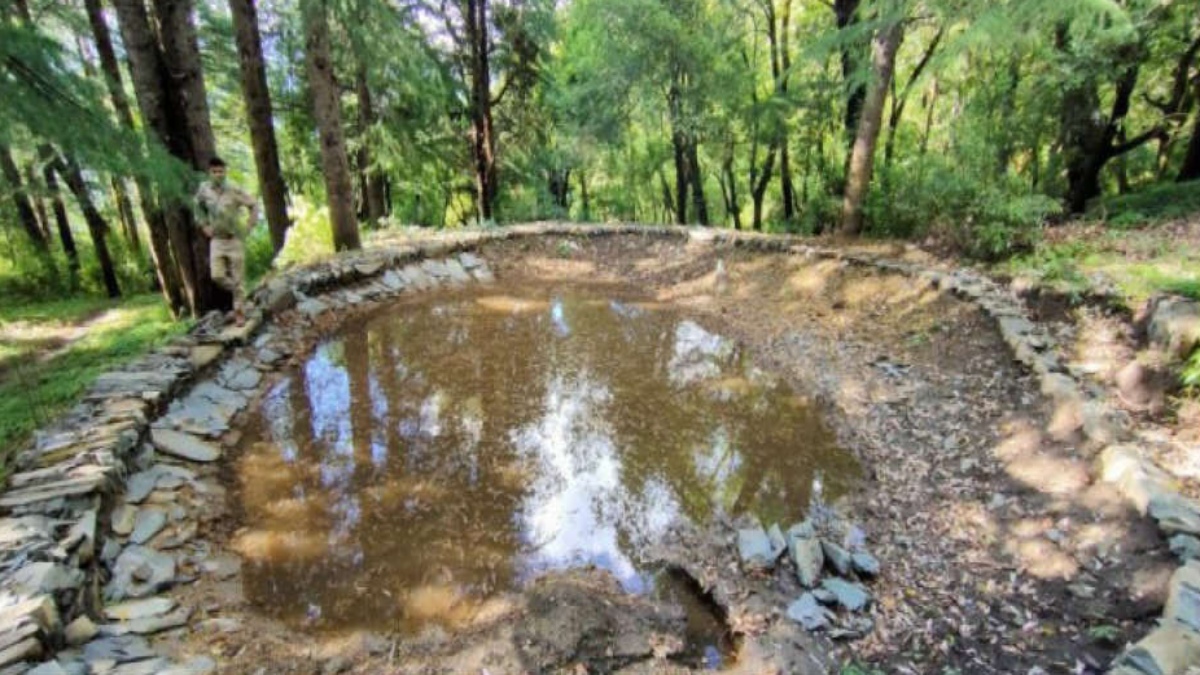


In May 2016, with major fires blighting around 1,900 hectares of forests in Uttarakhand, the government had to send two MI-17 helicopters, NDRF, SDRF, and Army personnel to douse the flames. A total of 1890.79 hectares of the green cover was destroyed inthat fire season cycle of four years. Now, in 2021, the Rudraprayag Forest department has turned the tide. Forest fires used to be a major setback for Chamoli, Pauri, Rudraprayag, Tehri, Uttarkashi, Almora, Pithoragarh, and Nainital. But now these areas are brimming with harvested water, and that has not only been able to combat fire incidents but has also helped livestock and created contour trenches to save soil as well.
With all these efforts amid the pandemic, the Rudraprayag Forest division has managed to store 10 million litres of water within 330 hectares of forest that is now declared treated and can combat every four-year fire cycle. It has been possible due to extensive efforts which enabled the creation of small ponds, trenches, and check dams.
Speaking about the issues in Rudraprayag forest division, IFS officer Vaibhav Singh told The Daily Guardian, “We have around 30000 hectares of Chir Pine dominated forests. As Chir always grows in the dryer parts of the forest it makes it more vulnerable to fire. Secondly, due to the dry forest floor and no soil moisture, hardly any vegetation comes up in these forests.”
“Many villages in the district source their water from the nearby forest areas through small streams and channels. In peak summer season, these water bodies dry up and create issues for the adjoining villages. Not only humans but the wild and domestic animals also suffer from lack of water,” Singh added.
To combat these issues, the forest department in Rudraprayag has been working extensively for the past couple of years in conserving rainwater and soil moisture.
With monsoon knocking on doors, the hilly state of Uttarakhand has started recording heavy rainfall. While national highways are getting blocked due to landslides, places like Chamoli, Rudraprayag, Bageshwar, and Pithoragarh are facing a rise in the river water levels.
“With the efforts of my staff, field team, and other people, we have managed to conserve more than 80 lakh litres of water during these 15-20 days of heavy rainfall,” Singh said.
To conserve rainwater in Rudraprayag, the traditional ways of “Chal Khal” system were mostly followed in the Garhwal region. The villagers would dig small percolation pits on every bit of available land on the slopes that surrounded a drain line. The pits prevent water and soil erosion and also enhance percolation. The rainwater oozes into the soil and recharges the groundwater, and ultimately forms a river body.
Singh told The Daily Guardian, “We have been doing this work for the past two-three years, but last year in particular we did it on a very large scale. Out of all the six ranges in the division, we selected areas vulnerable to fires. With the help of funds availed from the State Compensatory Afforestation Fund Management and Planning Authority (CAMPA) and NamamiGange scheme, we made around 1732 check dams of various types ranging from vegetative to crate wires and contour trenches were dug up in 330 hectares of degraded Chir Pine forests. With this, around 612 water bodies of different capacities were created with a total water retention capacity of more than 1 crore litres.”